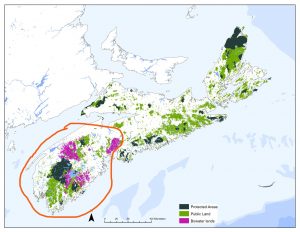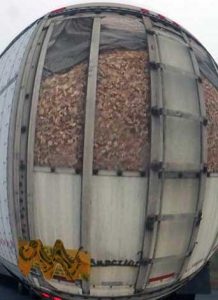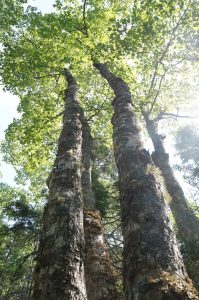Search this site
-
Recent Posts
- Nova Scotia Forest Notes: a record of goings-on in forests and forestry in Nova Scotia 21Jun2016-21Jun2022
- Shady Accounting and Vanishing Forests on Nova Scotia’s Crown Lands 14Jul2024
- Lichen Camp Day 127: symbiosis is always the topic 7Jul2024
- On our Wabanaki Forest 21Jun2024
- Fourteen students completed the first official tree marking course in Nova Scotia 20Jun2024
Recent Comments
- Nova Scotia Government responds to Questions about the Sustainable Forest Harvest Level 16Oct2024 | Nova Scotia Forest Matters on Feds’ Satellite Forest Monitoring Map illustrates intensity of forest harvesting in Nova Scotia
- dbt therapist san diego on What lichens and lichenologists can and sometimes cannot tell us
- heets wholesale uk on What lichens and lichenologists can and sometimes cannot tell us
- เกียรติบัตรออนไลน์ on What lichens and lichenologists can and sometimes cannot tell us
- จำหน่าย พัดลมอุตสาหกรรม on What lichens and lichenologists can and sometimes cannot tell us
Archives
- September 2024
- July 2024
- June 2024
- March 2024
- February 2024
- January 2024
- November 2023
- September 2023
- June 2023
- May 2023
- April 2023
- March 2023
- February 2023
- January 2023
- December 2022
- November 2022
- October 2022
- July 2022
- June 2022
- May 2022
- April 2022
- March 2022
- February 2022
- January 2022
- December 2021
- November 2021
- October 2021
- September 2021
- August 2021
- July 2021
- June 2021
- May 2021
- April 2021
- March 2021
- February 2021
- January 2021
- December 2020
- November 2020
- October 2020
- September 2020
- August 2020
- July 2020
- June 2020
- May 2020
- April 2020
- March 2020
- February 2020
- January 2020
- December 2019
- November 2019
- October 2019
- September 2019
- August 2019
- July 2019
- June 2019
- May 2019
- April 2019
- March 2019
- February 2019
- January 2019
- December 2018
- November 2018
- October 2018
- September 2018
- August 2018
- July 2018
- June 2018
- May 2018
- April 2018
- March 2018
- February 2018
- January 2018
- December 2017
- November 2017
- October 2017
- September 2017
- August 2017
- July 2017
- June 2017
- May 2017
- April 2017
- March 2017
- February 2017
- January 2017
- December 2016
- November 2016
- October 2016
- September 2016
- August 2016
- July 2016
- June 2016
Categories
- About the website
- Acadian Forest
- Biomass
- Biophilia
- Certification
- Citizen Science
- clearcuts
- Climate Change
- Conservation
- Corbett-Dalhousie Lakes
- deforeststion
- Economics
- Ecosystem Services
- events
- Fire
- Fish
- Forest Certification
- Gold Mining
- hardwoods
- herbicides
- HPMV
- Ind Rev Post-Report
- Independent Review
- Indigenous Peoples
- L&F
- Landscape Level Planning
- Letters&Editorials
- Lichens
- Loon Lake
- Lumber
- Mi'kmaq
- Mining
- Natural History
- Natural Resources & Renewables
- New PC Government
- NSDNR
- NTFP
- Old Growth
- Parks & Protected Areas
- Pests
- Post NP mill
- Private Woodlots
- Pulp & Paper
- Rankin
- Recreation
- Selection Harvest
- Show Us the Science
- Social Media
- Social Values
- softwood lumber
- spraying
- Tree Harvests
- Triad
- Uncategorized
- Urban forest
- Variable Retention
- Wabanaki Forest
- Watersheds
- WestFor
- Wildlife
- Wood Construction
- Woodscamp
Meta
WestFor makes its case to Digby Municipal Council
In an article in the Digby Courier Sara Ericsson reports on a Mar 28, 2017 presentation by the WestFor General Manager, Marcus Zwicker, to Digby Municipal Council on its business and methods. This followed concerns about the extent of clearcutting expressed by Digby Co. residents (view Digby Courier, Mar 7, 2017). The neighbouring Annapolis Co. has also voiced concerns.
Continue reading
Continue reading
Posted in Acadian Forest, clearcuts, WestFor
Leave a comment
Editorials and letters about forestry in Nova Scotia, continued..29Mar2017
WestFor defended
View Crown land prudence (CH, Mar 29, 2017).The author, whose name is cited at the end, fails to mention that he is co-owner of one the mills in the WestFor group.
Odd: the general manager for WestFor, likewise didn’t state his affiliation in an op-ed a while back.
Posted in Letters&Editorials, WestFor
Leave a comment
Nova Scotia forests & forestry: birds, mosses and biophilia
As well as in op-eds and letters to the editor, more voices expressing concern about the state of Nova Scotia forests or simply a love of the Acadian forest are appearing in the social media. A few that I have come across recently are highlighted below.
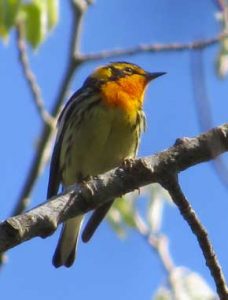
Blackburnian Warbler photographed by Angela Granchelli
Of wood and warblers: musings on my upcoming 3rd spring migration season as a birder in Nova Scotia
Angela Granchelli writes her blog Atlantic Canada Birding as an “independent travelling sales representative with a large geographical area [who finds] birding a great way to unwind after a day of sales calls”.
She was inspired to write about wood warblers after attending Donna Crossland’s presentation to the Nova Scotia Bird Society on March 23. She compiled a list of the 22 wood warblers that breed in Nova Scotia and their preferred vegetation; she also lists “vagrant” visitors. Continue reading
Call of the Forest documentary screens in Halifax tonight (Mar 24, 2017)
“Call of the Forest comments on the state of the world’s old growth forests and reminds us that trees provide emotional and physical benefits to those ever in its presence.
Posted in Acadian Forest, Biomass, Biophilia, Conservation, Old Growth
Leave a comment
Softwood lumber woes
“Still left out in the dark, however, are Nova Scotia’s private wood lots owners”
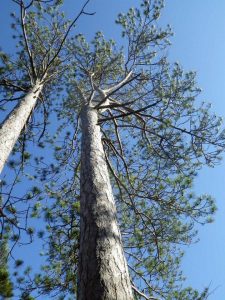 Well before the American election, our softwood lumber trade with the U.S. (worth circa $85M to Nova Scotia, and $4.6 billion to Canada at large) was on shaky grounds. The last softwood lumber agreement ran out Oct 12, 2015, and the subsequent one-year litigation standstill period ran out a year later. Already the U.S. International Trade Commission has said that Canadian lumber is “subsidized and sold in the United States at less than fair value”, causing harm and the U.S. Commerce Department is conducting anti-dumping and countervailing duty investigations. (CBC, Jan 6, 2017).
Well before the American election, our softwood lumber trade with the U.S. (worth circa $85M to Nova Scotia, and $4.6 billion to Canada at large) was on shaky grounds. The last softwood lumber agreement ran out Oct 12, 2015, and the subsequent one-year litigation standstill period ran out a year later. Already the U.S. International Trade Commission has said that Canadian lumber is “subsidized and sold in the United States at less than fair value”, causing harm and the U.S. Commerce Department is conducting anti-dumping and countervailing duty investigations. (CBC, Jan 6, 2017).
With Trump’s America First policies, the old arguments of the benefits of trade for both sides hold much less weight; Canadians will have to demonstrate that U.S. imports of Canadian lumber increase jobs in the U.S., e.g. by lowering costs and stimulating U.S. housing and showing that those benefits exceed losses in competing (but more expensive) U.S. lumber suppliers. Continue reading
LighthouseNOW article provides a little more clarity on pending WestFor Agreement
Negotiations with the Mi’kmaq community are required and appropriate.
An article by Brittany Wentzell in LighthouseNOW, a Bridgewater and Lunenburg-based newspaper, provides some new info about the pending Forest Utilization Licence Agreement (FULA) that would give a consortium of 13 mills (“with WestFor”) access and a lot of management control over the Western Crown Lands for the next 10 years.
The online version opens with an image of the letter sent by the County of Annapolis to Premier McNeil on March 3 (view post Mar 8, 2017).
Continue reading
Posted in clearcuts, Mi'kmaq, NSDNR, WestFor
Leave a comment
“We cannot log and burn our way out of climate change”
So says Dr. Bill Moomaw, Professor of International Environmental Policy at Tufts University and an author of The Great American Stand: US Forests & The Climate Emergency. “Logging forests and burning trees to generate electricity in place of coal while not counting the emissions may help governments meet their emission goals, but the atmosphere and climate is where the real accounting takes place.” He was cited in a MongaBay article by Mike Gaworecki, Mar 21, 2017.
View The Great American Stand: US Forests & The Climate Emergency” by Bill Moomaw and Danna Smith, Dogwood Alliance Media Release, Mar 21, 2017. The report was released on the International Day of Forests.
Continue reading
Posted in clearcuts, Climate Change
Leave a comment
Nova Scotia increases max height for wooden residential buildings
“Nova Scotia is adopting changes to the National Building Code, which include increasing the maximum height of wooden residential buildings from four to six storeys. The Fire Safety Act and Regulations will also be changed to enhance safety requirements for the taller wood buildings.” View Press Release (Mar 17, 2017)
Also view:
Good news story on wood products, Nova Scotia
(Post Mar 18, 2017)
New wood construction opportunities for Atlantic Canada (Post Mar 6, 2017)
From molecules and cells to trees, forests, and tall buildings made of wood (Post Dec 22, 2016)
ADDED April 4, 2017: Tristan Cleveland: Why six-storey wooden buildings are good news for Halifax
Halifax Metro News, Apr 3, 2017.
Posted in Wood Construction
Leave a comment
Resolute suit related to PHP still underway
Montreal based Resolute Forest Products’ suit related the Dexter government’s deals with the Port Hawksbury Paper (PHP) mill continues. View US paper company claims $52 million under NAFTA (Printing Industry news, March 8, 2017).
With the Trump government wanting to scrap or change NAFTA this has come at an interesting time. Canada has counter claimed that the US company has taken too long to file there for it should be tossed out. It is expected in the current US political environment that more US companies will be paying more attention to the NAFTA deal. What effect this will have on the Canadian printing industry has still to be determined.
Posted in Pulp & Paper
Leave a comment
FAO promotes forests and energy for International Day of Forests, Mar 21
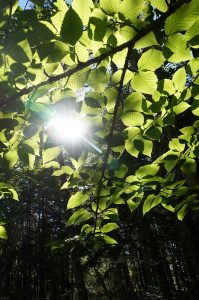 “The United Nations General Assembly proclaimed 21 March the International Day of Forests (IDF) in 2012. The Day celebrates and raises awareness of the importance of all types of forests. On each International Day of Forests, countries are encouraged to undertake local, national and international efforts to organize activities involving forests and trees, such as tree planting campaigns. The theme for each International Day of Forests is chosen by the Collaborative Partnership on Forests. The theme for 2017 is Forests and Energy.” View short video at www.fao.org/international-day-of-forests/en/
“The United Nations General Assembly proclaimed 21 March the International Day of Forests (IDF) in 2012. The Day celebrates and raises awareness of the importance of all types of forests. On each International Day of Forests, countries are encouraged to undertake local, national and international efforts to organize activities involving forests and trees, such as tree planting campaigns. The theme for each International Day of Forests is chosen by the Collaborative Partnership on Forests. The theme for 2017 is Forests and Energy.” View short video at www.fao.org/international-day-of-forests/en/
A google search failed to reveal much uptake of this celebration in Canada, but I was pleased to see Stanley Park being celebrated by the Stanley Park Ecology Society as a remnant coastal rainforest.
The short FAO video espouses forest bioenergy in all its forms, which made me cringe. It has not gone unnoticed otherwise: Continue reading
Posted in Climate Change, events
Leave a comment

